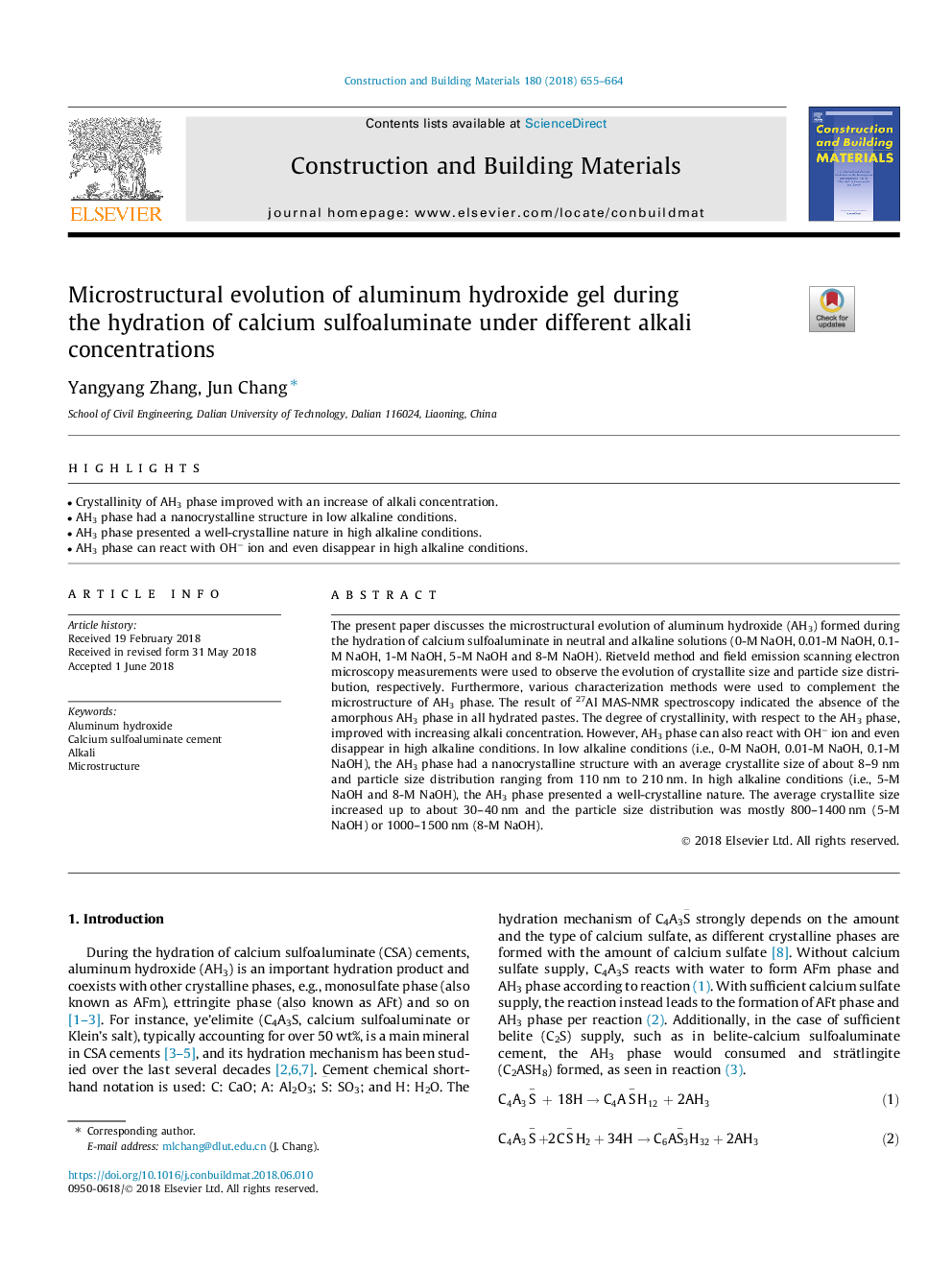| Article ID | Journal | Published Year | Pages | File Type |
|---|---|---|---|---|
| 6712692 | Construction and Building Materials | 2018 | 10 Pages |
Abstract
The present paper discusses the microstructural evolution of aluminum hydroxide (AH3) formed during the hydration of calcium sulfoaluminate in neutral and alkaline solutions (0-M NaOH, 0.01-M NaOH, 0.1-M NaOH, 1-M NaOH, 5-M NaOH and 8-M NaOH). Rietveld method and field emission scanning electron microscopy measurements were used to observe the evolution of crystallite size and particle size distribution, respectively. Furthermore, various characterization methods were used to complement the microstructure of AH3 phase. The result of 27Al MAS-NMR spectroscopy indicated the absence of the amorphous AH3 phase in all hydrated pastes. The degree of crystallinity, with respect to the AH3 phase, improved with increasing alkali concentration. However, AH3 phase can also react with OHâ ion and even disappear in high alkaline conditions. In low alkaline conditions (i.e., 0-M NaOH, 0.01-M NaOH, 0.1-M NaOH), the AH3 phase had a nanocrystalline structure with an average crystallite size of about 8-9â¯nm and particle size distribution ranging from 110â¯nm to 210â¯nm. In high alkaline conditions (i.e., 5-M NaOH and 8-M NaOH), the AH3 phase presented a well-crystalline nature. The average crystallite size increased up to about 30-40â¯nm and the particle size distribution was mostly 800-1400â¯nm (5-M NaOH) or 1000-1500â¯nm (8-M NaOH).
Related Topics
Physical Sciences and Engineering
Engineering
Civil and Structural Engineering
Authors
Yangyang Zhang, Jun Chang,
